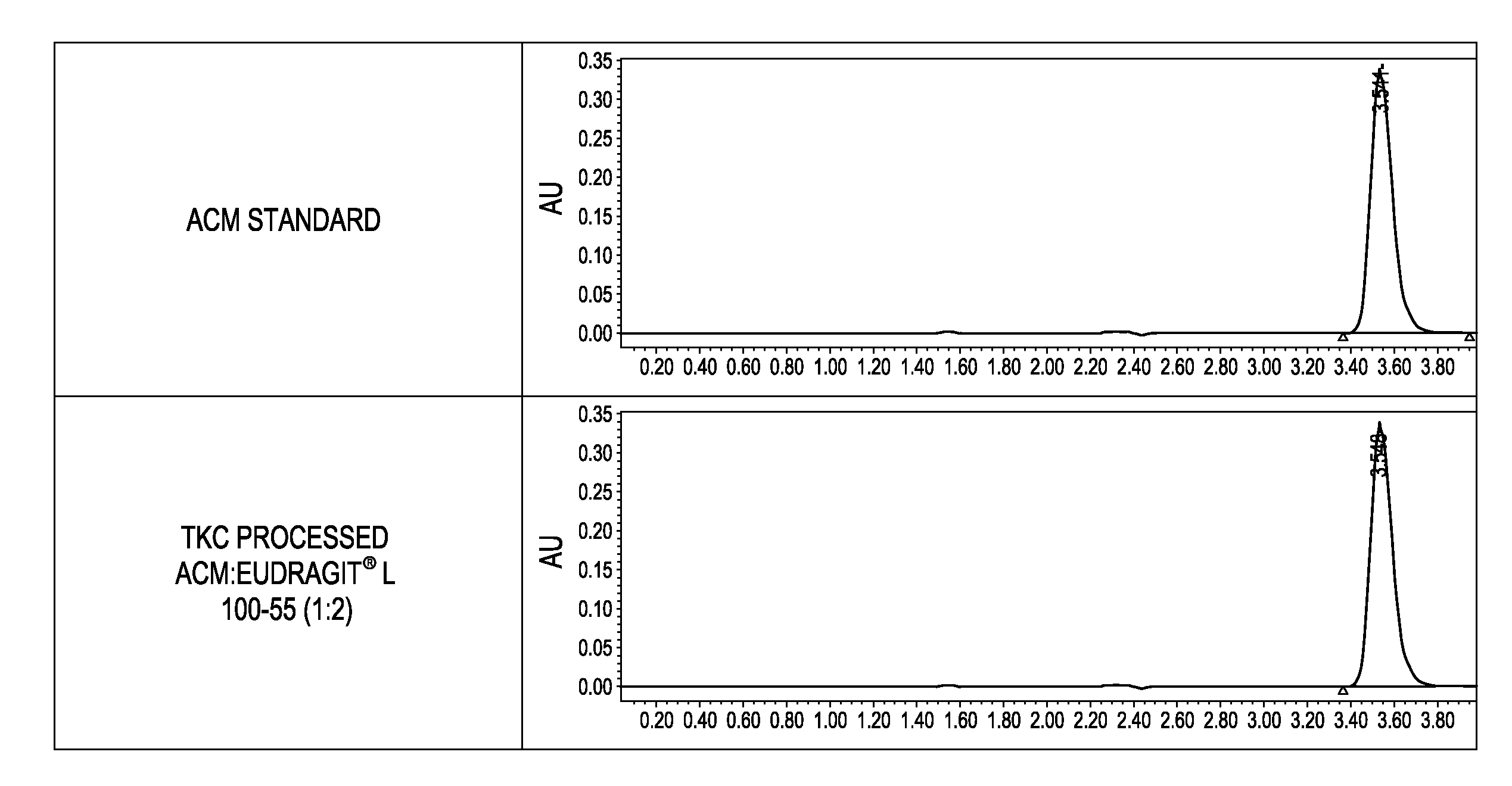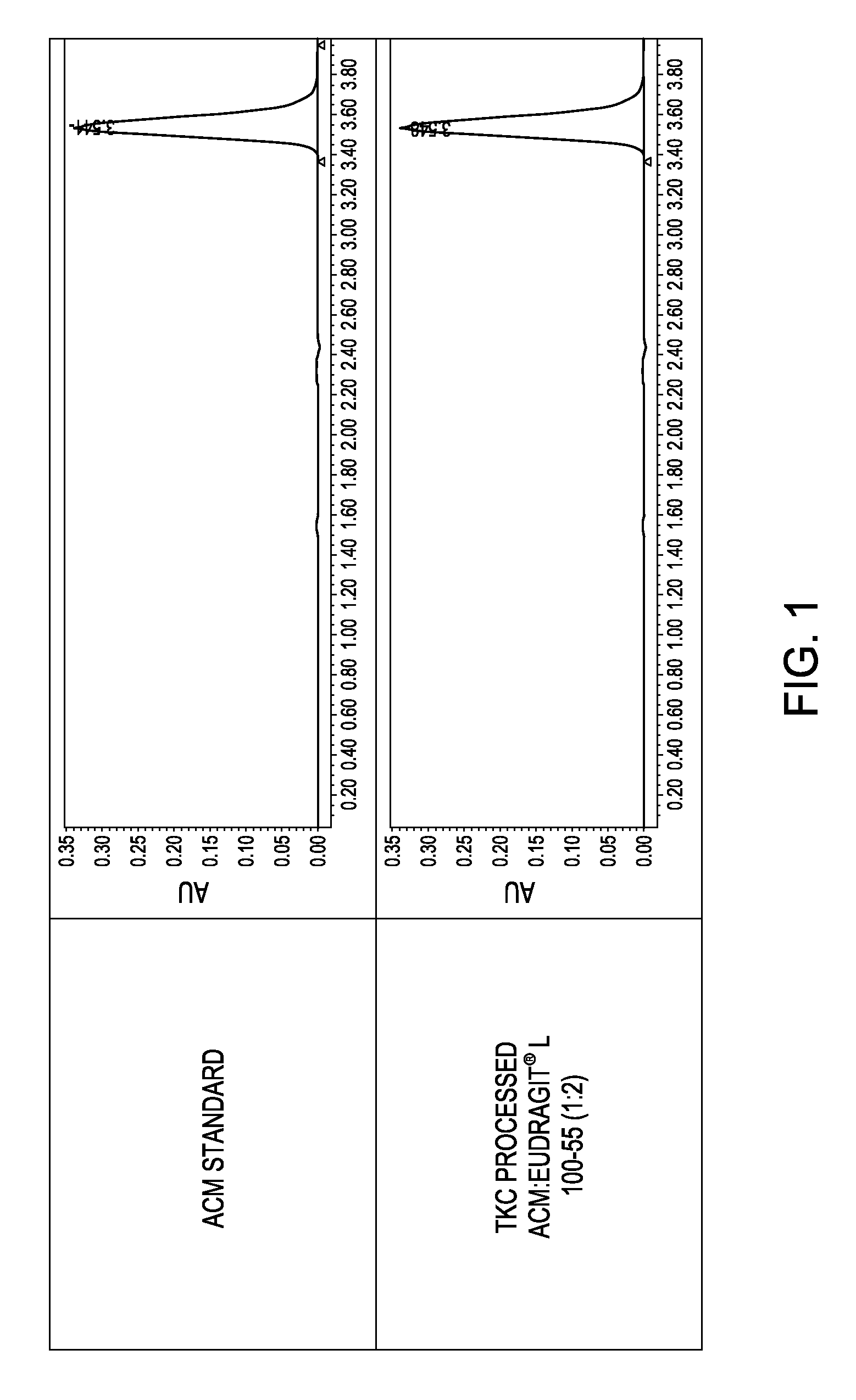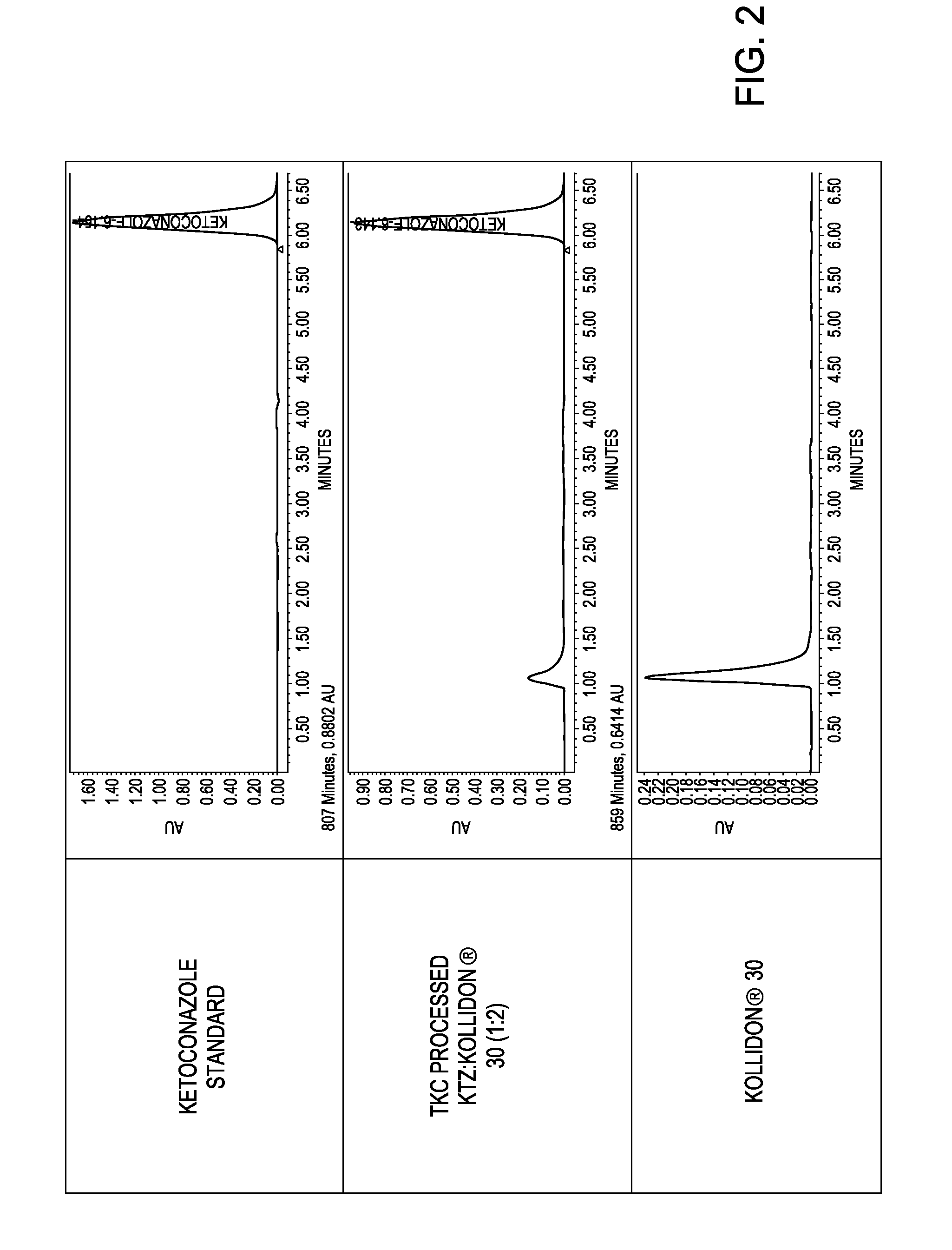Thermo-Kinetic Mixing for Pharmaceutical Applications
a technology of thermal kinetics and pharmaceutical ingredients, applied in the field of thermal kinetic mixing of active pharmaceutical ingredients, can solve the problems that the therapeutic potential of many of these molecules is often not fully realized, and achieve the effects of reducing relaxation events, enhancing mechanical properties, and increasing mechanical properties
- Summary
- Abstract
- Description
- Claims
- Application Information
AI Technical Summary
Benefits of technology
Problems solved by technology
Method used
Image
Examples
example 1
[0107]This study investigates the application of a novel manufacturing process, thermokinetic compounding (TKC), to the production of amorphous solid dispersion systems. The TKC process offers many of the same attributes that have made hot-melt extrusion (HME) a preferred method of manufacture for solid dispersions formulations. However, TKC has some very unique capabilities that distinguish the process from HME and suggest vast potential for innovative applications to various facets of pharmaceutical manufacturing. Specifically, TKC offers the benefits of very brief processing times, low processing temperatures, molten mixing without viscous flow, and significantly higher rates of shear than typical twin-screw melt extruders. It was the aim of this study to investigate the use of TKC for the production of amorphous pharmaceutical solid dispersion systems to assess its potential as an alternative technology to HME. Various solid dispersion systems were produced by TKC with different...
example 2
[0145]A further study provides a demonstration that amorphous solid dispersions of poorly water soluble drugs can be produced using a novel high energy manufacturing technology, thermokinetic compounding (TKC), having equivalent properties to compositions produced by hot melt extrusion (HME) with substantially reduced processing times.
[0146]Solid dispersions of poorly water soluble drugs, itraconazole (ITZ) and griseofulvin (GRIS), in hydrophilic carriers (1:2 drug:carrier ratio), hydroxypropyl methylcellulose and polyvinylpyrollidone, were produced using a novel high energy manufacturing process and compared to equivalent formulations processed by HME. Modulated differential scanning calorimetry (mDSC) and X-ray diffraction (XRD) were used to assess the amorphous nature of the compositions. Supersaturated dissolution testing was conducted by adding an amount of drug equivalent to 10-times equilibrium solubility to evaluate the degree and extent of supersaturation. Potency testing w...
example 3
[0156]The inventors have also demonstrated that solid dispersions of itraconazole (ITZ) and Eudragit® L100-55 can be produced using a fusion process without the aid of a plasticizer to achieve superior solid state characteristics compared to material produced using traditional manufacturing techniques.
[0157]In this study, solid dispersions of ITZ and Eudragit® L100-55 (1:2) were produced using TKC and compared to equivalent formulations processed by hot melt extrusion (HME). HME processed material could not be produced without the aid of a plasticizer. Triethyl citrate (TEC) was used as a plasticizer at 20% w / w of dry polymer. Modulated differential scanning calorimetry (mDSC) and X-ray diffraction (XRD) were used to assess the amorphous nature of the compositions. Supersaturated dissolution testing was conducted based on the USP Method A enteric test by adding an amount of drug equivalent to 10-times acid phase equilibrium solubility to evaluate the degree and extent of supersatura...
PUM
| Property | Measurement | Unit |
|---|---|---|
| size | aaaaa | aaaaa |
| size | aaaaa | aaaaa |
| size | aaaaa | aaaaa |
Abstract
Description
Claims
Application Information
 Login to View More
Login to View More - R&D
- Intellectual Property
- Life Sciences
- Materials
- Tech Scout
- Unparalleled Data Quality
- Higher Quality Content
- 60% Fewer Hallucinations
Browse by: Latest US Patents, China's latest patents, Technical Efficacy Thesaurus, Application Domain, Technology Topic, Popular Technical Reports.
© 2025 PatSnap. All rights reserved.Legal|Privacy policy|Modern Slavery Act Transparency Statement|Sitemap|About US| Contact US: help@patsnap.com



